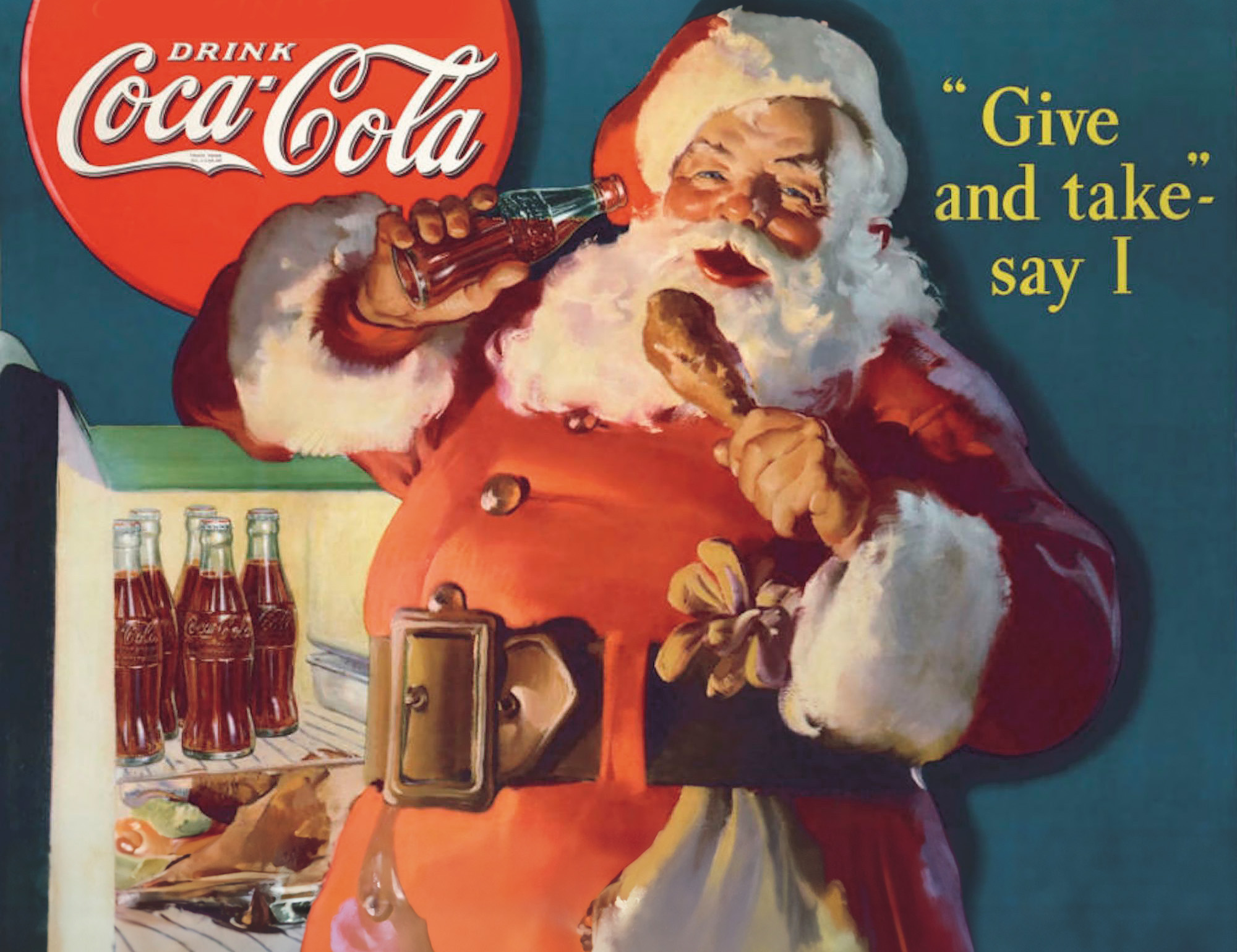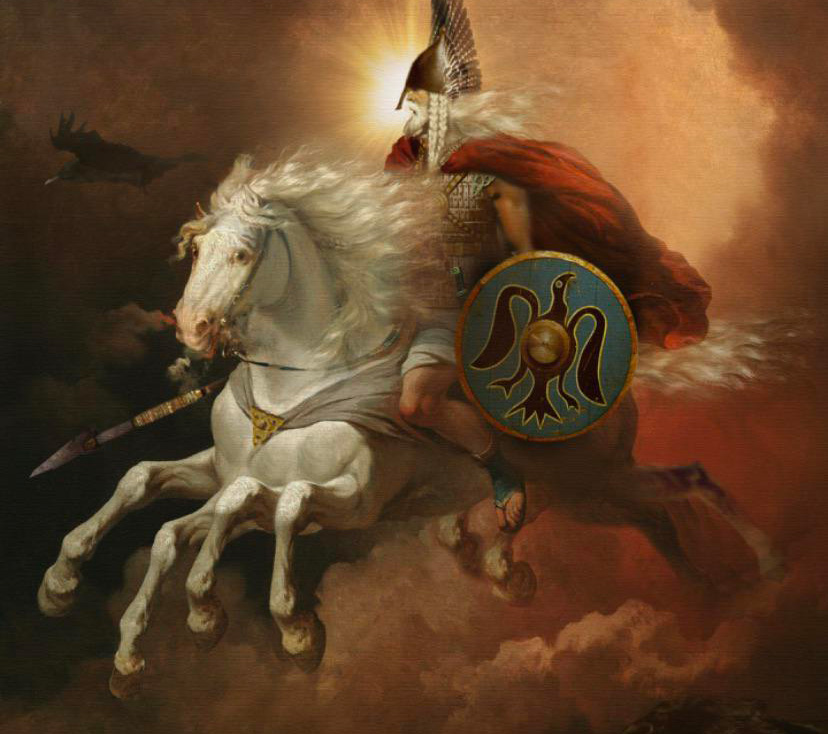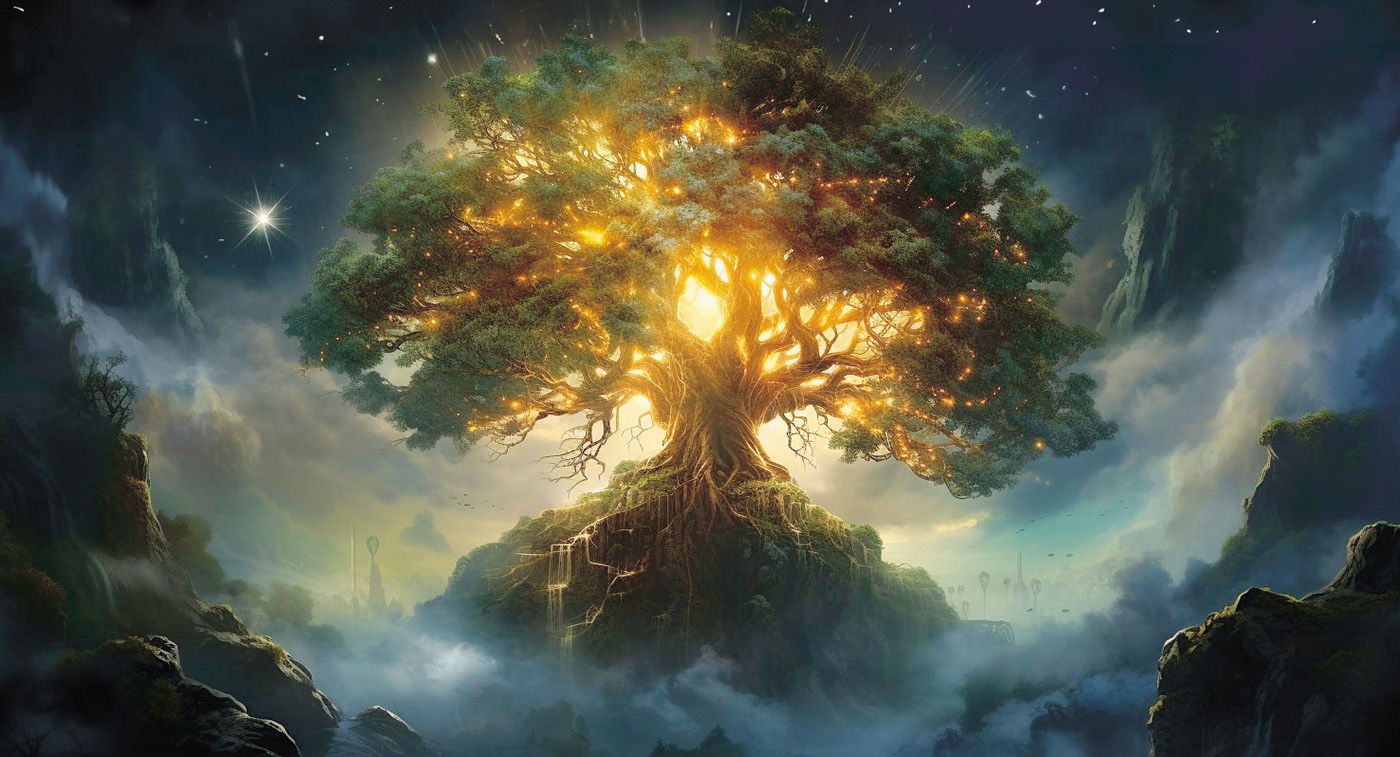Celbrate Yule like a true Pagan

As a younger person, I had always loved Christmas. Like many kids, I enjoyed decorating our house and tree with tinsel, sparkly things and lights. I remember eating way too much delicious food, getting cool gifts, hanging out with friends, and spending long summer days at the beach. Although my family were not churchgoers, like most people, Christmas was a big deal.
As time went on, however, “Christ Mass” and I grew apart. As a non-Christian, I found myself feeling hypocritical and empty, while wondering how to approach this highly commercialised celebration in a more authentic way
In our modern world, Christmas traditions have been strangely distorted, and seem to defy logic and meaning when trying to connect them back to Christianity.
I’m not just talking about our need to listen to Bing Crosby or Mariah Carey’s festive sing-along albums for an entire month. No, I also found myself wondering what fir trees, Yule logs, holly and kissing under the mistletoe all have to do with the birth of Jesus thousands of years ago.
The answer to this was, of course, nothing. In fact, Christmas is not mentioned in the Bible at all. But all these traditions do have significant meaning if you celebrate Christmas,or its traditional name Yule, authentically like a Pagan.
THE ORIGINS OF YULE IN SCANDINAVIA, THEY DON’T USE THE WORD CHRISTMAS.
Instead, they have retained the original name for the Yuletide celebrations, which they call Jul (pronounced Yule). Yule followed the midwinter solstice (usually around 21 December) and celebrated the return of the northern hemisphere sun as the days started to get longer again.
The festivities involved music, singing, dancing, feasting and a lot of drinking. Gift giving was only a small part of the celebrations which lasted up to twelve days, hence the twelve days of Christmas.
The solstice was particularly inauspicious as it was the night when Odin was said to ride through the skies on a wild hunt collecting the souls of the dead. So, understandably, everyone stayed indoors feasting and drinking, afraid to go outside lest they be caught out alone and abducted in Odin’s hunt.
The pre-Christian winter solstice festival would eventually be subsumed, along with many other Pagan celebrations, into the Christian Christmas we know today. Yule became the name for this festival around the 9th century, and in many languages, Yule and its cognates are still used to describe modern Christmas in some parts of Europe.
Rituals like decorating trees, giving gifts, singing and feasting all have deep Pagan origins that predate Christianity and were practised by the Germanic peoples for thousands of years.
The path to an authentic Yule celebration seems already laid out. It’s just a matter of getting back to basics, buying less stuff and understanding where these long-held traditions came from in the first place.

GIFT GIVING
Nowadays, we spend a lot of money on Christmas gifts; it can be a frantic affair and buying them for everyone can be incredibly stressful and unnecessarily costly. We may not realise it, but it’s the exact opposite of what we should be doing if we want to celebrate the true nature of gift-giving.
Unlike today, Pagans exchanged modest handmade items and food with only those closest to them.
The gesture of giving was considered sacred, emphasising the exchange of small tokens for prosperity and good luck.
Died fruit and Yule treats with flavoured spices like nutmeg, cinnamon and ginger, along with holly wreaths symbolising luck, were popular choices. Over time, gifting has become an expectation, with the getting becoming more important than the giving. As a multi-billion dollar industry, we have essentially ripped the heart out of its true meaning.
Going small and giving gifts from the heart is most definitely a way to honour the true meaning of gifting.
THE YULE LOG TRADITION
Here in Australia, it is way too hot to set a fire in the house at Christmas time. However, we do like a good summer barbie, and in many ways the Yule log tradition suits our outdoor holiday BBQ culture well, especially if you’re a meat lover.
Throughout Europe, the burning of a special log for luck and fortune was a tradition long before the arrival of Christianity.
Lit on the shortest day of the year, the Yule log was very big and in some instances a whole tree trunk, large enough to burn all twelve days of Christmas. It was also often burning while Pagans cooked their sacrificed animals — goats were a favourite. In England, oak was the wood of choice, Scotland preferred birch, and France used cherry wood.

The log was often sprinkled with wine or herbs before burning, filling the air with delightful aromas. The ashen remains were saved and used during the year to ward off evil spirits and other misfortunes, and often added back into the subsequent Yule fire, honouring the cycle of death and rebirth.
This sacred tradition was eventually adopted by Christianity, which says it can also represent the birth and death of Christ.
As for the poor goat, it has been at the top of the animal sacrifice list by religions the world over for centuries, but Swedish Pagans also believed the Yule goat to be an invisible spirit that would appear before the festival to ensure that the holiday preparations were done correctly.
SACRED MISTLETOE
Ever wondered about the correlation between mistletoe and kissing? The tradition goes back to the Romans, Celts, Druids and the Norse who all considered mistletoe a highly sacred plant. Mistletoe honoured the god Saturn, and to keep him happy, followers would perform fertility rituals underneath sprigs of mistletoe.
And yes, that’s exactly what it sounds like! Sex was a popular solstice activity, so be grateful the tradition has been toned down somewhat and your great aunt just wants a kiss when she arrives on Christmas day.

In the world of the ancient Druids, mistletoe represented tranquillity and joy. During times of war, if enemies met underneath woodland mistletoe, they would put their weapons down and form an evening truce so they could drink and feast together until the next day.
Kissing under the mistletoe beautifully symbolises peace, love and a deeper connection to others. It can also be used as a modern-day ritual of truce as friends and family gather together. Now, that sounds like a worthwhile exercise.
SANTA AND THE 8-LEGGED HORSE
Today’s Santa Claus — also not mentioned in the Bible — was actually developed by Coca-Cola as a marketing campaign in the 1930s to sell, you guessed it, Coke! The image above and associated text certainly make a strong comment on American society and the massive commercialisation of Christmas.

The idea of an old man giving gifts is a familiar story in many cultures, with similar Santa-style characters found in folklore worldwide.
Our current well-known giver of gifts is based on Saint Nicholas who, interestingly enough, was the patron saint of children, toymakers, unmarried people, brewers, pawnbrokers, repentant thieves, prostitutes and the poor. An odd mix of job titles, to say the least. Saint Nicholas, who lived during the 4th century in Myra (Turkey), was known for his great generosity and kindness, which gave rise to legends of miracles he performed during the festive season.
Santa’s true roots, however, date back to the Vikings. The god Odin, who was worshipped by Germanic Pagan tribes, was also portrayed as an old man with a long, white beard.
It’s told he would ride through the night skies on his 8-legged horse called Sleipnir. Kids would fill their boots with carrots and straw, and leave them by the chimney for Sleipnir to feed on. Odin would fly by and reward the children by leaving little presents in their boots, much like we do with Christmas stockings today.

Image : Yule and the Odins Wild Hunt
So if you have younger children (or a pawnbroker) at home, stockings are a great way to honour the memory of Saint Nicholas, Odin and Sleipnir, the 8-legged horse.
YGGDRASILL, THE GREAT TREE
The iconic fir tree is probably our strongest Yule symbol and one with the deepest roots. Adorned with glittering ornaments and lights, it originates from early Germanic folklore and Roman customs. Plants, fruit and herbs have been used for thousands of years to honour the gods, encourage and promote fertility, bring luck and celebrate new beginnings.

The tradition of decorating tree branches is said to have emerged from Norse mythology and stories of the great tree. Yggdrasill, also called the world tree, is said to be a giant ash supporting the whole universe. It is closely related to the Tree of Life from Celtic Culture, and its motif is found across many cultures and appears in almost all religions worldwide.
Decorating a tree, or even a simple branch, is a ritual thousands of years old and a harmonious way of connecting to nature and the greater universe.
Trees are symbols of knowledge, abundance, strength, calmness and growth that remind us of the interconnectedness of everything. These ancient and rich concepts can make Christmas and Yule a deeper and more fulfilling celebration of life.
GRATITUDE AND REFLECTION
Yule and the end of the year is also a natural time for introspection. Rather than religious observance, we can use this period to reflect on the year gone by and set intentions for the one ahead. I like to spend time in my garden and nature reflecting on what I’m grateful for and the personal growth I’ve experienced. It helps me enter the new year with a sense of perspective and purpose.
THE SPIRIT OF THE SEASON
Ultimately the festive season can be whatever you choose to make of it, but by focusing on values like kindness, generosity and connection, we can create a meaningful celebration that aligns with our beliefs.
So, deck your hall with holly, kiss under the mistletoe, raise a glass of mead with family and friends, and spread love wherever you can. Happy Yule.







